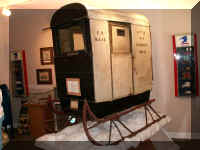
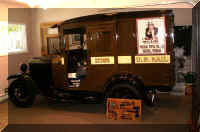
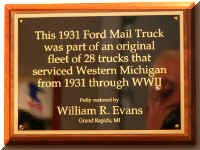
Marshall, MI - 2006 and 2007
Updated: 11/09/08
In 2006, we drove into downtown to visit the Post Office Museum. It turned out that we only saw the Annex - we missed the main museum. This was our entry from 2006 . . . We visited the Post Office Museum again in May, 2007. Seeing the items displayed in the main part of the museum were well worth a return visit. We have added photographs from 2007 below.
The main museum has a terrific collection of post office artifacts. We were told this collection of postal delivery history is second only to the items at the Smithsonian Institute. The photographs added below will give you a small sample of the items displayed.
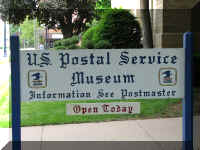
The museum displayed two logos.
On our second visit, there was a piece of paper on the door with the handwritten words saying "Enter Here".
Our tour started in a room with this wall displayed. It has two service windows, glass front mail slots and several post office boxes. The service window on the far left was for the processing of Money Orders. The other window was surrounded by mail slots for each mail customer. There particular mail slots had glass fronts permitting the customer to see if there was mail ready for pickup. The mail was handed to the customer through the service window. On the right are the post office boxes accessible from the lobby. During this time in postal history there was no delivery to the customer's location.
The postmaster was responsible for building the local post office. If not located in a free-standing building, a wall similar to this would be a part of another business and located in an existing building. Therefore, each 'post office' was, to some degree, unique in design. Many styles of post office box doors were manufactured by many different manufacturers.
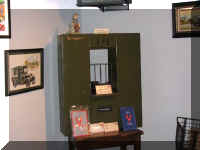
Mail delivery to the customer was made possible by a wide range of methods. Ways of carrying the mail to the mail route and to each customer depended on if it was a city route or a rural route. Of course, city delivery existed long before the expansion to rural areas.
Many will remember these carts being pushed along the local sidewalk or business district. And mail delivery persons have carried our mail in many styles of pouches.
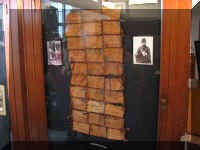
Horse drawn wagons were used on the first rural routes. Some of the wagons were designed to use wheels or runners depending on the weather.
Because the buggies were small, to save space mail was sorted into pockets in a canvas holder. After the mail was inserted, the pockets were rolled into a small bundle for easy handling.
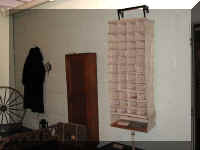
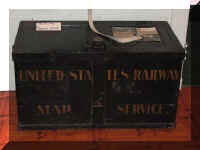
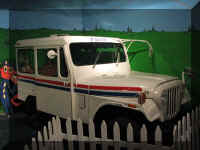
This 3-wheel vehicle was popular until several tipped over
or found dangerous for other reasons.
With home and commercial delivery and pickup of mail came the need for many types and styles of mail boxes.
This glass mail box let you
check to see if you had mail.
Brass mail boxes were used
only in special locations.
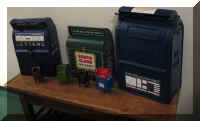
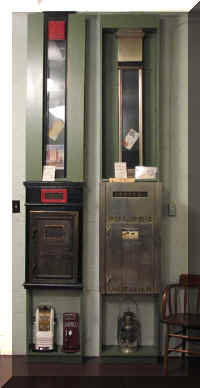
There was an interesting story about an envelope found in one of these drop box when a building was being demolished. After considerable effort, the post office delivered the letter to the addressee - but, delivery had been delayed by 50years.
Early mail carriers used a postage stamp and cash box like this one to service customers on their route.
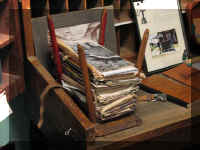
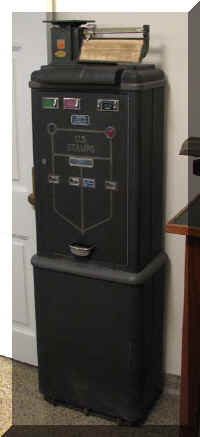
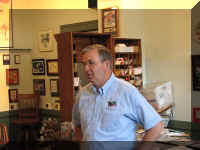
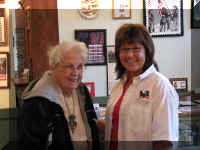
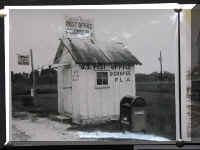
When you visit Marshall, Michigan do not miss this museum. It was very interesting. Admission is free. You do have to use stairs to reach the museum - we are not aware of an elevator. We suggest you call ahead to obtain hours and verify accessibility.
NOW . . . we flash back to our original posting of our 2006 visit to Marshall, Michigan
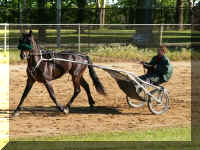
There is always time in the weekend schedule for touring the local area. Several attractions were close to the fairgrounds. We selected the following as of interest to us. Almost across the street from the fairgrounds was the governor's mansion - built in 1839 but never occupied by a governor.
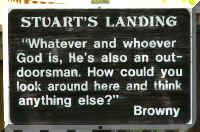
We spent more time here and at the city park than at the other attractions due to their beauty. This sign presented a very true statement.
The city park, Ketchum Park, was a beautiful place.
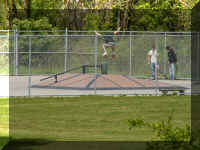
We drove across town to the Honolulu House. Judge Abner Pratt build this house in 1860 to resemble the executive mansion he had occupied in Honolulu, Hawaii.
The Honolulu House shared the traffic circle with the Brooks Memorial Fountain.
Driving into downtown Marshall we saw this fellow peddling down the street.